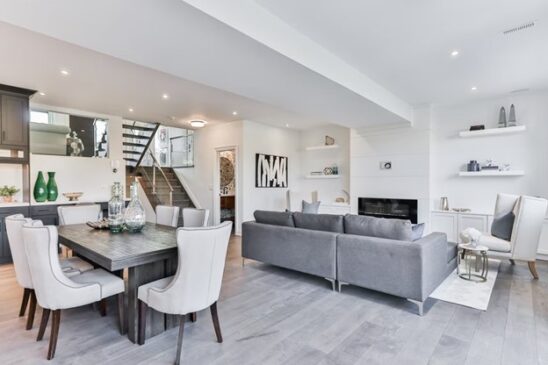Best Types of Flooring for a Humid Climate
Each room has its own flooring needs. Modern floor coverings are really very diverse. The choice depends on the overall interior solution, the features of the installation, and the functional characteristics of the room. Due to their water-resistance properties, some materials can be used in the kitchen and bathroom; others require delicate care and are suitable only for living rooms.
Those who live in Hawaii understand how tricky it is to select the best flooring for a humid climate. Therefore, before heading to the flooring store on Oahu and deciding which modern flooring in Hawaii to select, we recommend reading the post. We have described the top-4 flooring options.
Varieties of floor coverings suitable for a humid climate:
- laminate;
- vinyl;
- linoleum;
- tile.
Let us briefly describe each of these types in detail.
Laminate
Laminate floors look just like real wood or stone. This means they can come in a wide range of diverse designs. These floors are splash- and scratch-resistant, making them durable and long-lasting. If your ideal floor is stylish, versatile, and truly beautiful, we recommend laminate! Laminate flooring is made from a high-density fire-retardant board (HDF) finished with a tough layer of top sheeting.
HDF is resistant to changes in temperature and humidity, and the wear layer protects it from scratches and dents. Therefore, this is a good option for a humid climate.
Vinyl
Vinyl flooring (LVT) is another popular option in the flooring world — there is no floor today that is more versatile and practical than vinyl. Its photographic overlay can mimic a wide range of other materials, be it wood, stone, or ceramic.
These floors are made of PVC, which gives them extra strength. It is 100% waterproof, can be used with underfloor heating, and has a scratch-resistant wear layer. If you want to choose a floor covering that will combine many properties, such as aesthetics, strength, wear resistance, water resistance, resistance to discoloration under the action of sunlight, as well as a coating that is most protected from abrasion of the top layer, but, at the same time, look like a natural material, then you should choose a vinyl floor.
Linoleum
There are many varieties of linoleum. They differ from each other in strength: for ordinary houses and apartments, the so-called “household linoleum” is produced, it is quite cheap and does not have any fantastic characteristics.
It is followed by semi-commercial and commercial, designed for high loads. They are used, for example, in public places — shops, hospitals, airports, etc.
Most types of linoleum have a heterogeneous structure. This means that linoleum consists of different layers, each of which performs its specific function. The top layer consists of polyvinyl chloride and is focused on wear and water resistance. It has a strong structure, and its thickness determines the wear resistance of the floor.
Underneath is the color layer, which contains the paint and defines the look and pattern of the coating. Under the color layer, there is a foamed vinyl backing, which provides the coating with heat and sound insulation qualities, softness, comfort, etc.
Commercial linoleum can be either heterogeneous or homogeneous. Homogeneous linoleum consists of a single layer, through which the color passes through the entire thickness. This provides it with a normal appearance even with high degrees of wear.
Advantages of linoleum are:
- wear resistance;
- comfort, good insulation;
- environmental safety;
- cheapness;
- ease of installation.
But there are also some flaws:
- High-temperature resistance and frost resistance are not the best;
- Not resistant to organic solvents such as alcohol, acetone, or oil;
- Fire hazardous.

PVC tiles
Like linoleum, PVC tile is multi-layered. The lower part — the base — consists mainly of PVC. It gives the coating the necessary elasticity, plasticity, and rigidity. It also protects against deformation and provides thermal insulation. Then comes the coloring layer with the pattern, a layer of transparent PVC, giving resistance to moisture and abrasion, is following. Sometimes another layer is applied over it — from polyurethane. We can say that such a tile is the same linoleum but of better quality and cut into tiles.
Advantages:
- strength — more than that of linoleum;
- variety of colors;
- good heat and sound insulation;
- water resistance.
Flaws:
- fire hazardous.
These are the top flooring options selected for a humid climate.




